
Sponsored • Lab equipment / grossing table
Kugel Medical – UCS-2000-D-E
Digitisation offers great opportunities in pathology to work more efficiently and faster. Used correctly, it reduces the workload for both pathologists and laboratory staff.

Digitisation offers great opportunities in pathology to work more efficiently and faster. Used correctly, it reduces the workload for both pathologists and laboratory staff.

Whole genome sequencing (WGS) from a single blood test picks up 31% more cases of rare genetic disorders than standard tests, shortening the ‘diagnostic odyssey’ that affected families experience, and providing huge opportunities for future research.
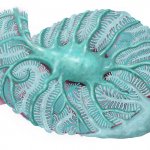
Researchers have leveraged the power of digital pathology and computational modeling to detect and quantify podocytes, a specialized type of cell in the kidney that undergoes damaging changes during early-stage kidney disease.

Together with Imperial College London (‘Imperial’), molecular diagnostics company DNAe has been awarded a UK Knowledge Transfer Partnership (KTP) by Innovate UK to support development of its next generation sequencing (NGS)-based diagnostic platform for use in cancer monitoring. The KTP program connects innovative businesses with academic experts who can help them deliver their ideas. This…

Roche announced that it has entered an agreement with PathAI, a global leader in artificial intelligence (AI)-powered technology for pathology. Under the development and distribution agreement, the companies will jointly develop an embedded image analysis workflow for pathologists. This workflow will allow PathAI image analysis algorithms to be accessed within Navify Digital Pathology, the cloud…

A new rapid molecular diagnostic test from Cepheid has received the CE mark for distribution in the European market. The test, called Xpert Xpress CoV-2/Flu/RSV plus, is designed for qualitative detection of the viruses causing Covid-19, Flu A, Flu B, and respiratory syncytial virus (RSV) infections from a single patient sample. The new plus version of the test provides a third gene target for…

Autoimmune hepatitis (AIH) is a chronic liver inflammation that is triggered by an immunological malfunction. In this case, the immune system falsely recognises the patient's own liver cells as "foreign to the body". The symptoms of this rare liver disease are unspecific, and the exact cause is not yet known. If left untreated, AIH can lead to abnormal scarring (fibrosis) of the liver,…

Researchers at the DZNE and the University Medical Center Göttingen (UMG) have identified molecules in the blood that can indicate impending dementia. Their findings, which are presented in the scientific journal “EMBO Molecular Medicine”, are based on human studies and laboratory experiments. Various university hospitals across Germany were also involved in the investigations.

Mass spectrometry – a powerful tool for analysing the molecular composition of a tissue sample – is invaluable during cancer surgery. However, mass spectrometers are complex and unwieldy, and certainly a poor fit for an operating room (OR). To create a bridge between the lab and OR, Professor Livia S Eberlin, from Baylor College of Medicine, has developed a very special ‘pen’.

The impact of the coronavirus pandemic on lung cancer patient care across Europe, and the contribution lung pathologists, have led to a better understanding of Covid-19, as outlined during the 33rd European Congress of Pathology, Within ‘The lung pathologist in the Covid-19 pandemic’ session, speakers detailed how the pandemic has affected patients, diagnosis and clinical trials, yet also…
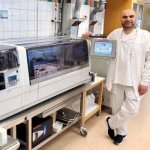
In recent years, digital pathology has become increasingly recognised as a clinical diagnostic tool and has taken a crucial role in pathology laboratories. One of the early adopters of digital pathology is the Department of Clinical Genetics and Pathology, Office for Medical Services, Region Skåne, a multisite Swedish laboratory which produces over 800,000 histopathology slides per year. The…
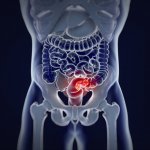
The number of colorectal cancer (CRC) cases diagnosed fell dramatically by 40% in a year during the Covid-19 pandemic, new research presented at United European Gastroenterology (UEG) Week Virtual 2021 has shown. The research, which was conducted across multiple hospitals in Spain, compared data from the first year of the Covid-19 pandemic with data from the previous year. Of 1,385 cases of CRC…

Researchers at Karolinska Institutet have developed an AI-based tool that improves the diagnosis of breast cancer tumours and the ability to predict the risk of recurrence. The greater diagnostic precision can lead to more personalised treatment for the large group of breast cancer patients with intermediate risk tumours. The results are published in the scientific journal Annals of Oncology.

Fast, flexible laboratory information management systems (LIMS) that cope with data and workflow complexities of molecular and genetic testing now work in laboratories internationally. Here, in the first in a new Lab Pinnacle Series, experts from the CliniSys Group, Sunquest Information Systems and Data Innovations (all owned by Roper Technologies), discuss the value of a LIMS in molecular and…
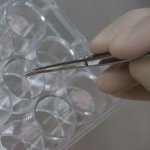
Research led by the Queensland University of Technology (QUT) on the interaction between prostate cancer cells and the tumour microenvironment has shed more light on the propensity of some types of prostate cancer to metastasize to bone more readily than other types.
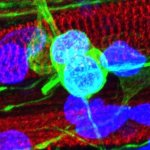
In the fight against diseases like amyotrophic lateral sclerosis (ALS), biomedical engineering researchers at the University of Southern California have created a powerful lab model to better see how our muscles and neurons connect.

Infectious disease diagnostics are notoriously slow. The gold standard for laboratory diagnosis of bacterial and fungal infection involves growing the pathogen from a clinical specimen – an overnight event, or even longer. The healthcare focus is on improving the use of antibiotics for better patient outcomes and reducing the environmental pressures that drive antibiotic resistance. To impact…
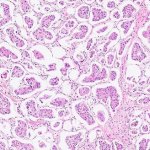
Roche announced the introduction of the Roche Digital Pathology Open Environment that allows software developers to easily integrate their image analysis tools for tumour tissue with Roche’s uPath enterprise software, an application for pathologist workflow. This open environment allows for the secure exchange and flow of data so that pathologists can access advanced algorithms from third…

More than 50 leading digital pathology experts have been lined up for a major conference in London in December looking at all aspects of the field. Speakers will explore latest developments, new trends, challenges, and innovation, as well as the effects of Covid-19 on pathology practice, during the 8th Digital Pathology and AI Congress on December 1 and 2. Artificial intelligence will feature…
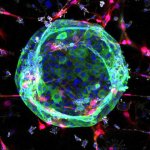
A new technology that can study which therapies will work on patients with solid cancerous tumours has been developed by scientists at University College London (UCL). Researchers say the tool, which can rapidly test tumorous tissue against different treatments, such as chemotherapy, immunotherapy or radiotherapy, could be used by clinicians to pinpoint the best therapy for a particular patient.
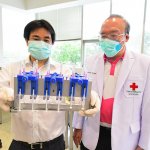
Researchers in Thailand have developed a device to get the most out of vaccine supplies: The automated vaccine filling machine from the Faculty of Engineering at Chulalongkorn University can fill AstraZeneca vaccine into syringes with precision, speed, and safety, helping to increase the number of vaccinated people by 20 percent. The prototype is now operating at Chula Vaccination Center and more…

Imaging company Lumito has secured a European patent for an instrument and staining reagents based on UCNPs (up-converting nanoparticles) for imaging in scattering materials, such as human tissue. The instrument is intended for use in tissue diagnostics, to provide pathologists visual depictions of tissue samples as an input for making diagnosis. The technology is patented across three global…
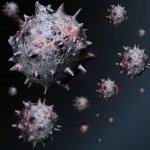
Viruses do not always kill the cells they infect. Researchers at the University of Basel have discovered in experiments with mice that cells have the power to self-heal and eliminate viruses. However, these cells undergo long-term changes. The findings may provide a hint as to why cured hepatitis C patients are more susceptible to liver cancer for years after.

Digital pathology (DP) is a game-changer in the workflow, functionality and accessibility of a hospital’s pathology department. As pathologists understand the benefits, and the availability of commercial products and systems increase, alongside data transmission and storage costs decreasing, DP deployment in hospitals is accelerating. Pathology informatics expert Anil V Parwani MD PhD discussed…

To avoid adverse reactions, personalised laboratory medicine can help to predict a patient’s drug response. Investigations based on DNA and other omics technologies – e.g. genomics, transcriptomics, proteomics, metabolomics – along with microarray technologies, is making a particularly valuable contribution to cancer care, in which personalised approaches are becoming possible through…